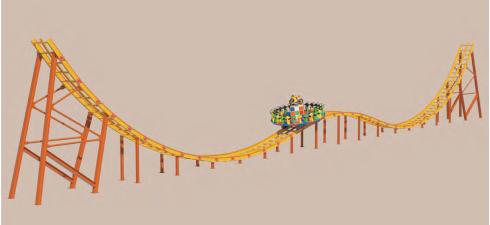- Albanian
- Arabic
- Belarusian
- Bengali
- Czech
- English
- French
- German
- Hebrew
- Hungarian
- Indonesian
- irish
- Italian
- Japanese
- kazakh
- Persian
- Russian
- Thai
- Uzbek
- Vietnamese
roller coaster design companies
The Thrilling World of Roller Coaster Design Companies
Roller coasters are a quintessential part of amusement parks and thrill-seeking adventures. These exhilarating rides evoke feelings of excitement, fear, and joy, drawing millions of visitors to parks around the world each year. At the heart of every great roller coaster lies a team of innovative and skilled designers, engineers, and manufacturers. The roller coaster design companies are the unsung heroes behind the creation of these adrenaline-pumping attractions. In this article, we will explore the world of roller coaster design companies, their contributions to the industry, and the exhilarating science that goes into creating these mechanical marvels.
Evolution of Roller Coaster Design
The concept of roller coasters dates back to the early 17th century, with simple wooden ramps in Russia. However, it wasn't until the 19th century that roller coasters began to evolve into the thrilling rides we know today. The introduction of steel tracks and advanced engineering techniques allowed for more complex designs and greater heights and speeds. Roller coaster design companies, such as Bolliger & Mabillard (B&M), Intamin, and Clearly, have pushed the boundaries of roller coaster technology over the years, integrating cutting-edge materials and sophisticated safety measures.
Key Players in the Industry
1. Bolliger & Mabillard (B&M) Founded in 1988 and based in Switzerland, B&M is renowned for its innovative designs and quality engineering. Some of their famous creations include the B&M hypercoaster and the flying coaster, which allows riders to experience the sensation of flight. B&M roller coasters are praised for their smooth rides and attention to detail, making them favorites among theme park enthusiasts.
2. Intamin Amusement Rides Established in 1967, Intamin is another giant in the roller coaster industry. This company is known for creating some of the tallest and fastest roller coasters in the world. Notable designs include Formula Rossa, located in Abu Dhabi, which holds the record for the fastest roller coaster at a dizzying 149 mph. Intamin continuously explores new technologies and designs, ensuring that they remain at the forefront of the industry.
3. RMC (Rocky Mountain Construction) RMC has revolutionized the industry by creating hybrid roller coasters that combine steel and wood, providing an entirely new riding experience. They are known for their innovative I-box track design, which allows for more intricate inversions and smoother rides on formerly wooden coasters. Their distinct approach has earned them a reputation for transforming old rides into modern attractions.
The Design Process
Creating a roller coaster is not simply about crafting a fast ride; it's a meticulous process that involves engineering, physics, and creativity. The design process typically involves several stages
roller coaster design companies

1. Concept Development Designers envision the theme, layout, and unique features of the roller coaster. They consider factors like height, speed, and the number of inversions while keeping safety and guest experience as top priorities.
2. Engineering and Simulation Engineers use advanced software to simulate the ride's dynamics and ensure that it meets safety standards. This phase is crucial for analyzing the forces riders will experience, including G-forces, which affect everything from rider comfort to structural integrity.
3. Prototype Testing Before construction begins, prototypes may be built and tested to assess performance. This phase helps identify any potential safety issues and allows for adjustments before the final product is created.
4. Construction and Installation Once the design is finalized, construction begins. This phase involves precision engineering and assembly, often taking several months or even years to complete.
5. Opening and Feedback After rigorous testing and safety inspections, the roller coaster opens to the public. Feedback from riders often leads to minor adjustments or enhancements to improve the overall experience.
Challenges and Innovations
The roller coaster industry is not without its challenges. Companies must adhere to stringent safety regulations and overcome design limitations. However, it is this very landscape of challenges that drives innovation. From vertical drops to immersive theming, roller coaster design companies continuously seek novel ideas to captivate the imagination of thrill-seekers.
Conclusion
Roller coaster design companies are integral to the amusement park experience, transforming fantasy into exhilarating reality. Their commitment to innovation, safety, and unparalleled excitement ensures that roller coasters will continue to be a source of joy and thrill for generations to come. As technology advances, the future of roller coasters promises even more spectacular rides that will leave us screaming for more. Whether it's through heart-stopping drops or weightless airtime, these companies are dedicated to redefining the boundaries of thrill, one ride at a time.
-
Flume Ride-Hebei Zhipao Amusement Equipment Manufacturing Co., Ltd.|Thrilling Water Attraction&Customizable DesignJul.30,2025
-
Flume Ride - Hebei Zhipao Amusement Equipment | Water Coaster, Thrilling DescentJul.30,2025
-
Flume Ride - Hebei Zhipao | Thrilling Water AttractionJul.30,2025
-
Flume Ride: Thrilling Water Attraction by Hebei Zhipao|Log Flume Manufacturers&Flume Ride DesignJul.30,2025
-
Flume Ride-Hebei Zhipao Amusement Equipment Manufacturing Co., Ltd.|Thrilling Water Coaster, Safe DesignJul.30,2025
-
Flume Ride-Hebei Zhipao Amusement Equipment Manufacturing Co., Ltd.|Thrilling Water Attraction, Safe DesignJul.30,2025
